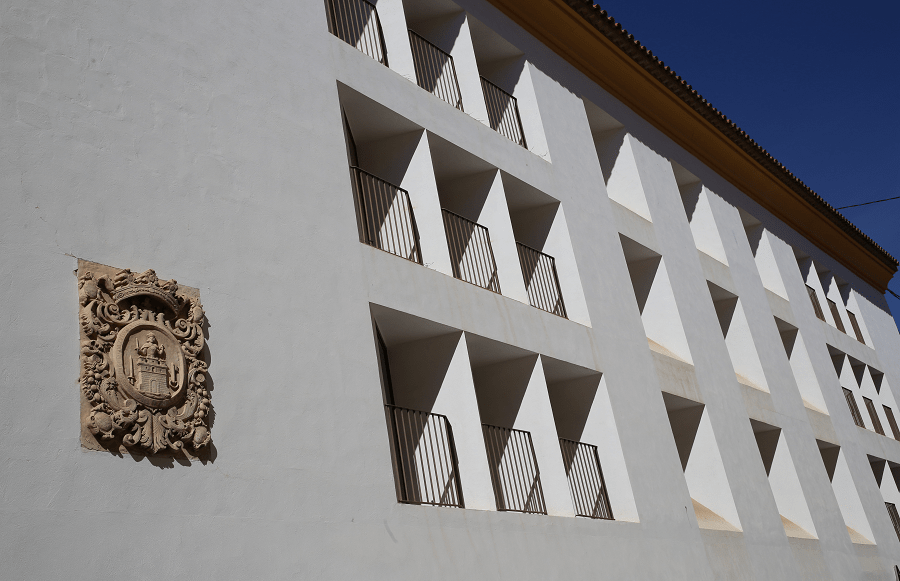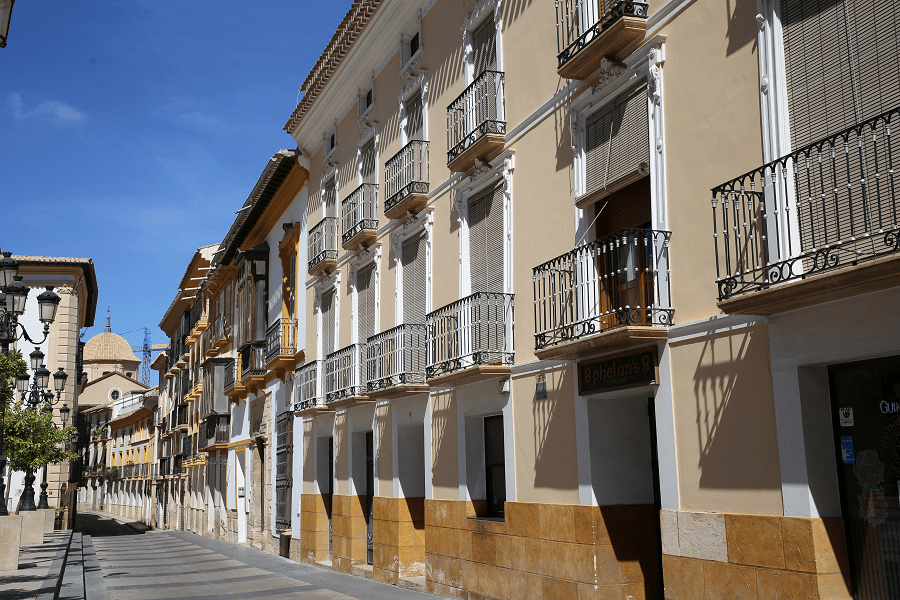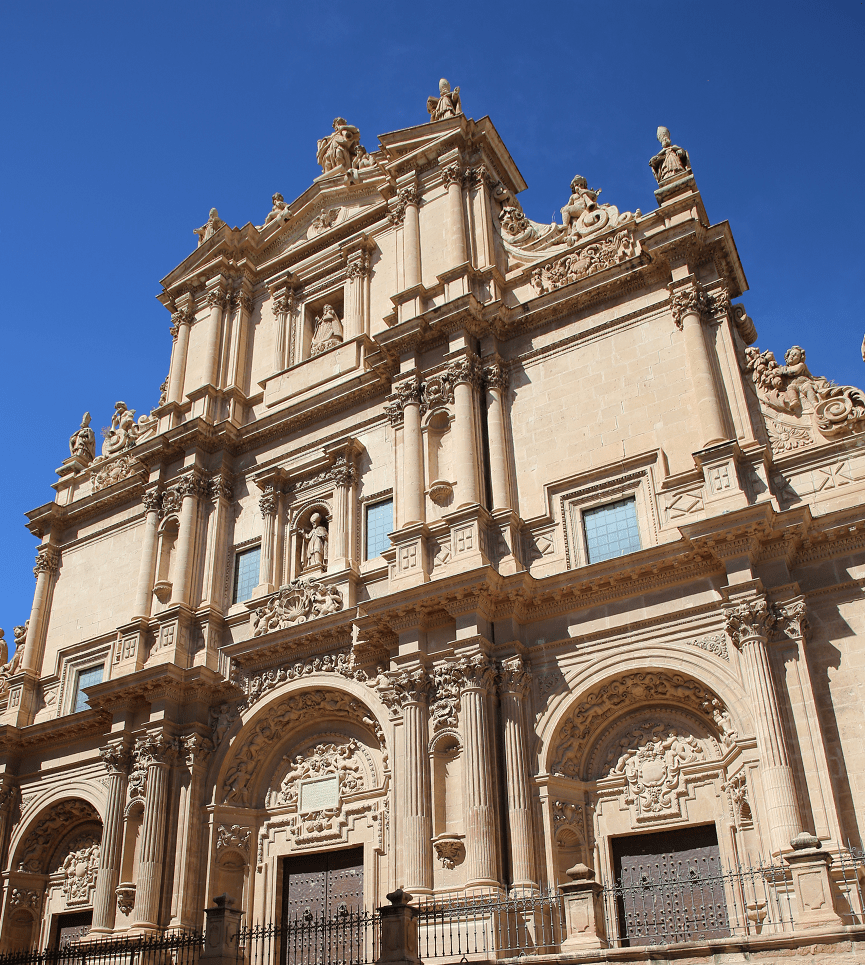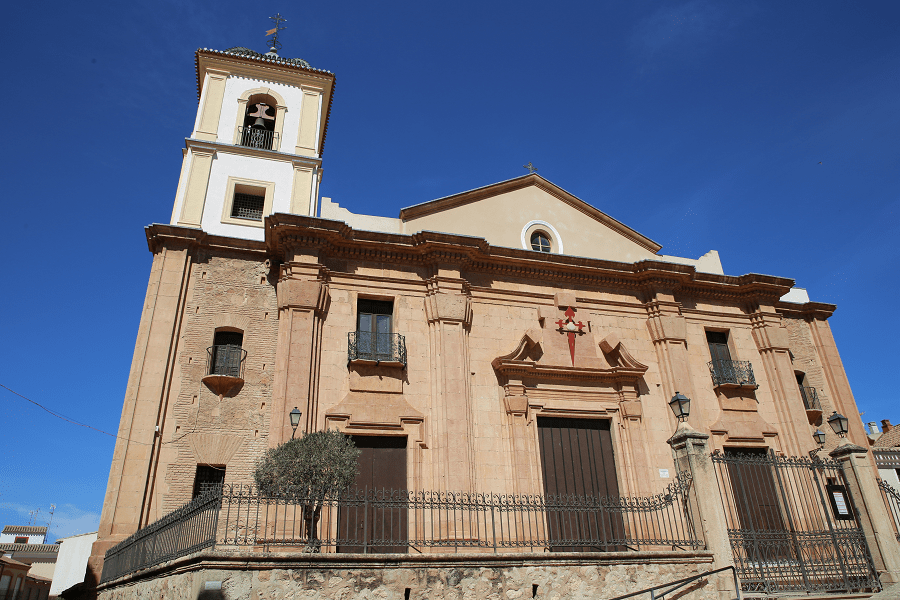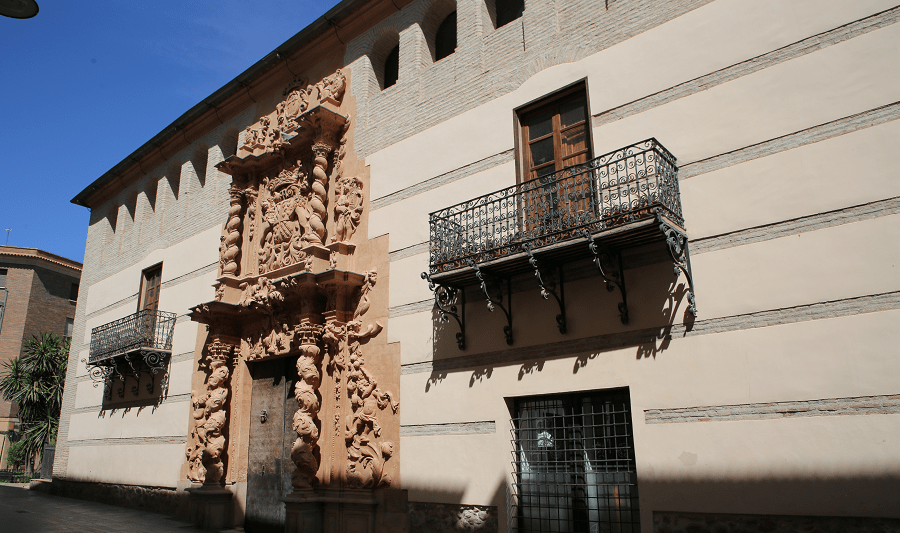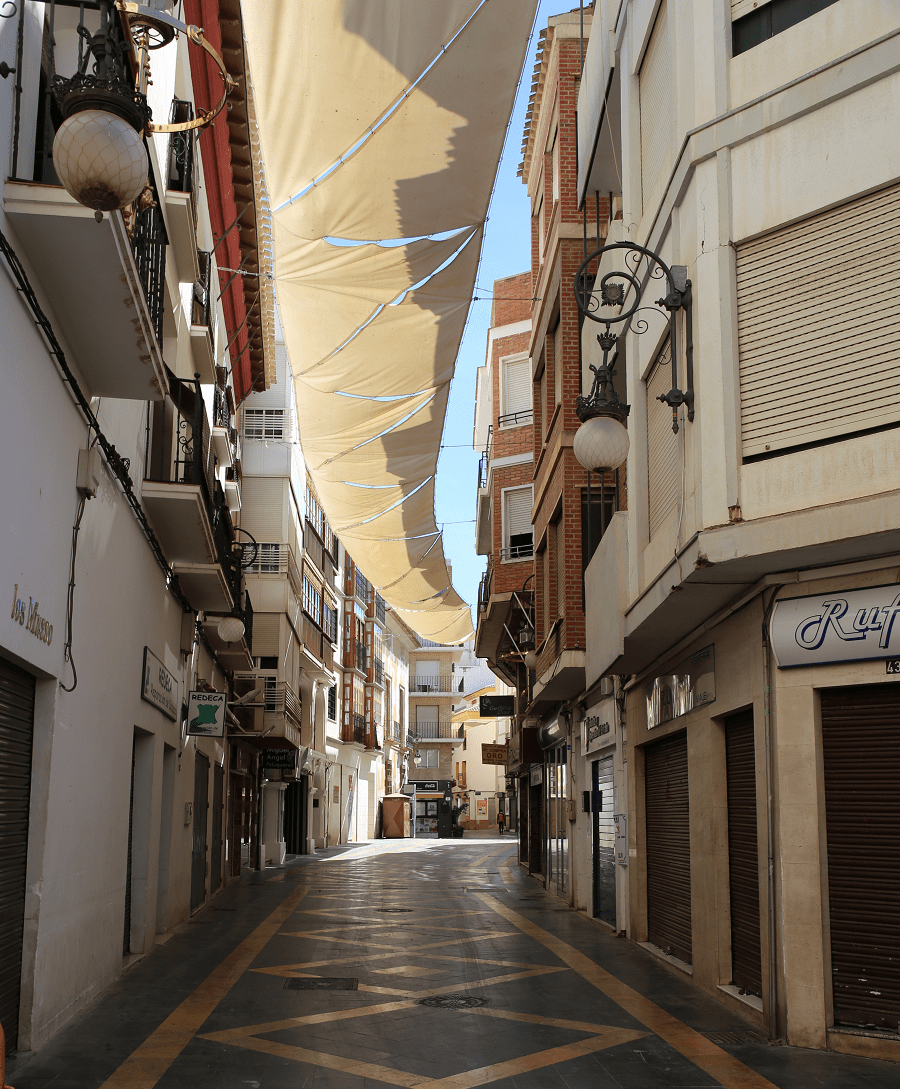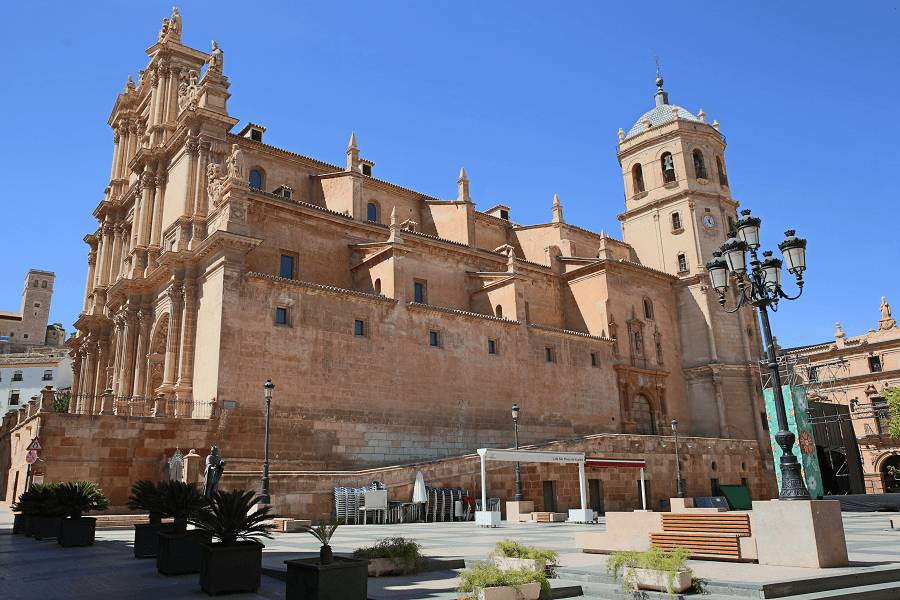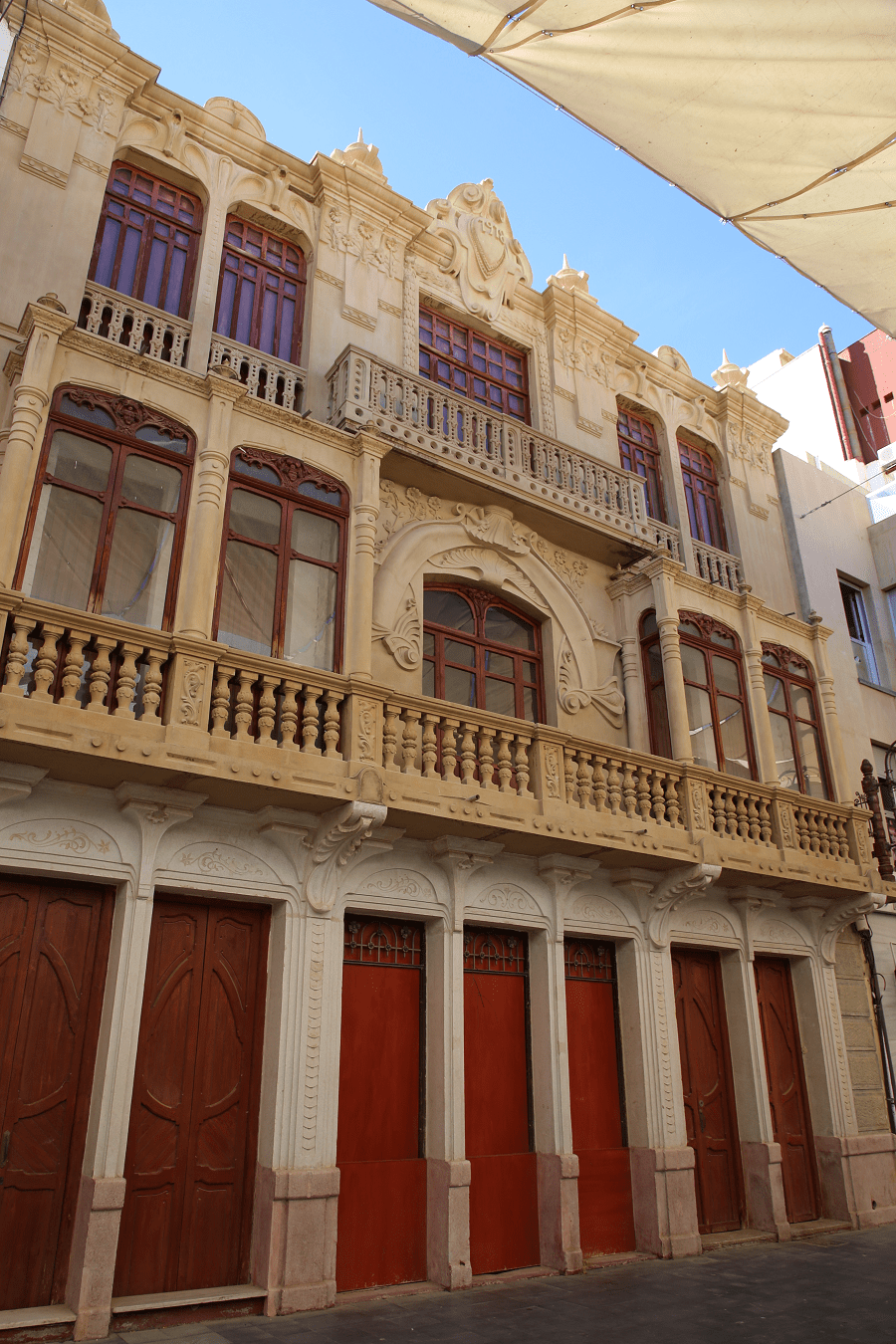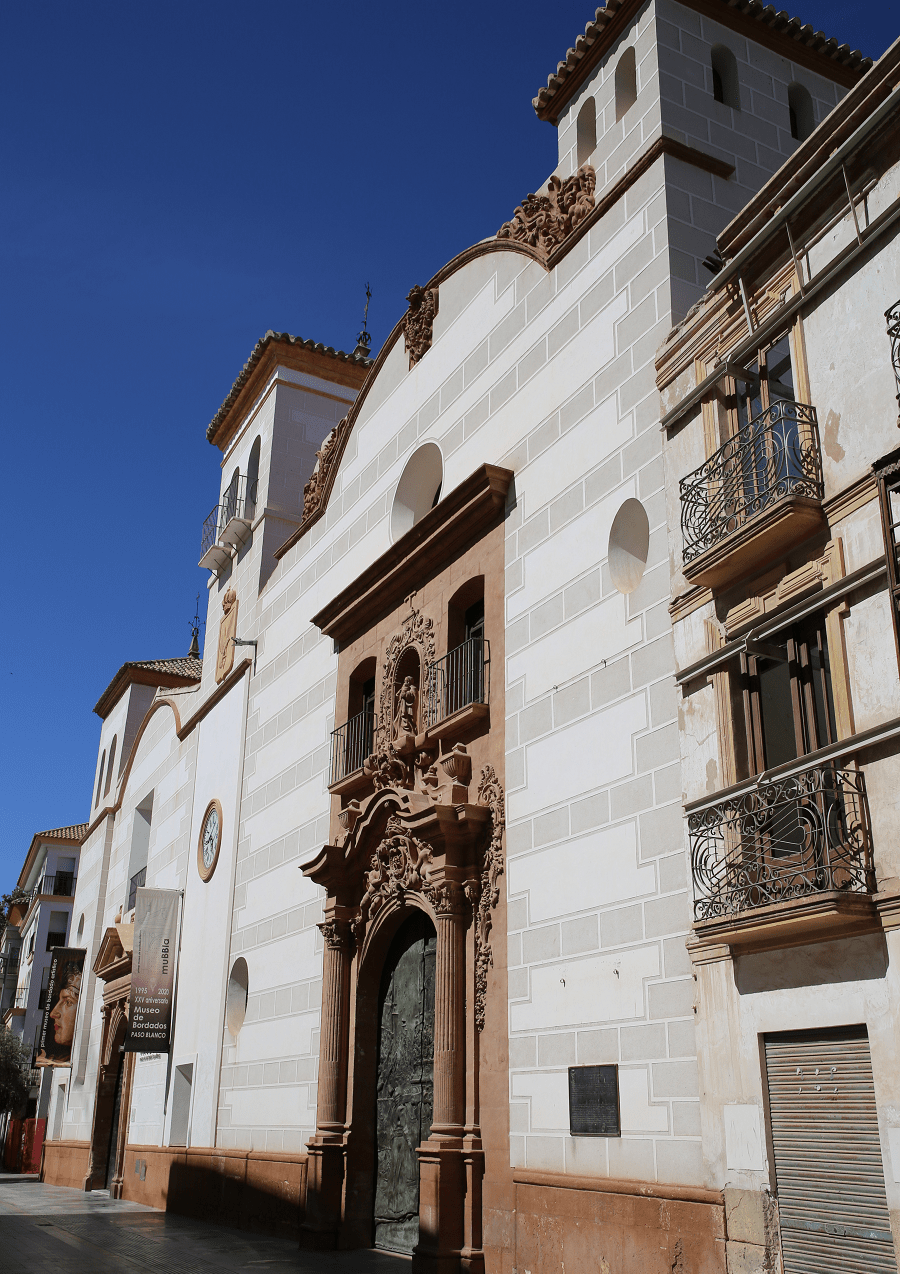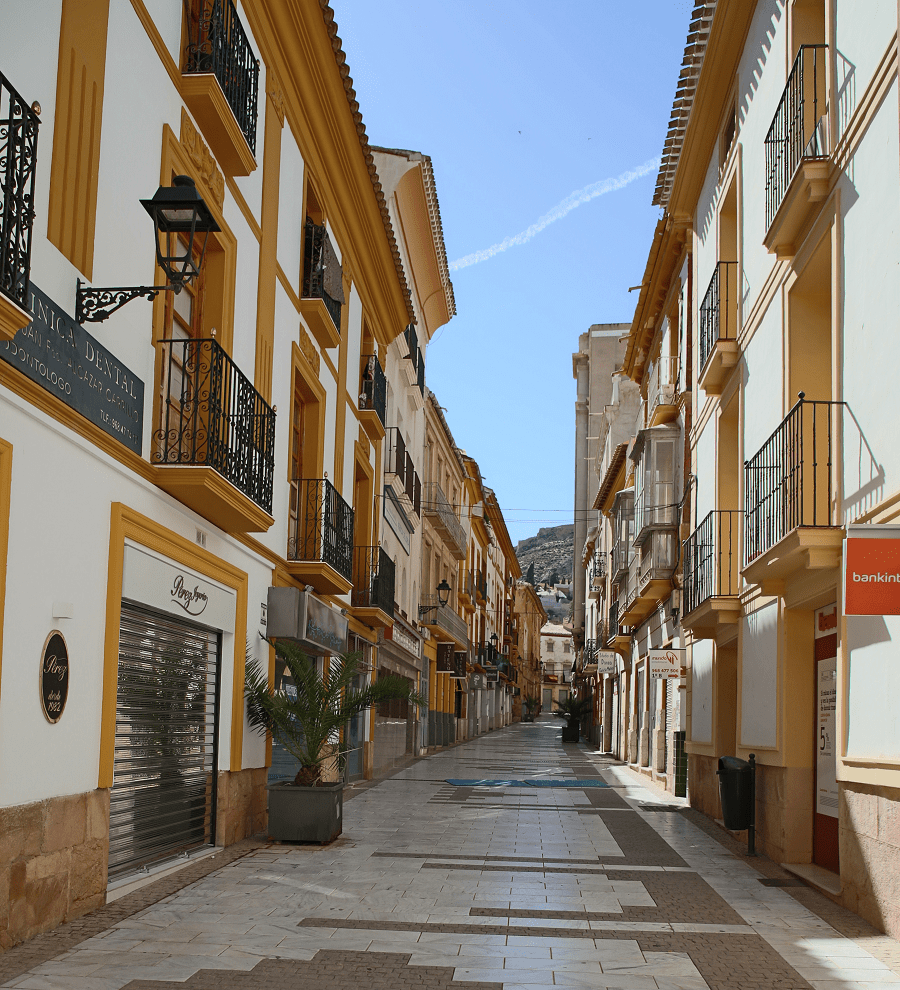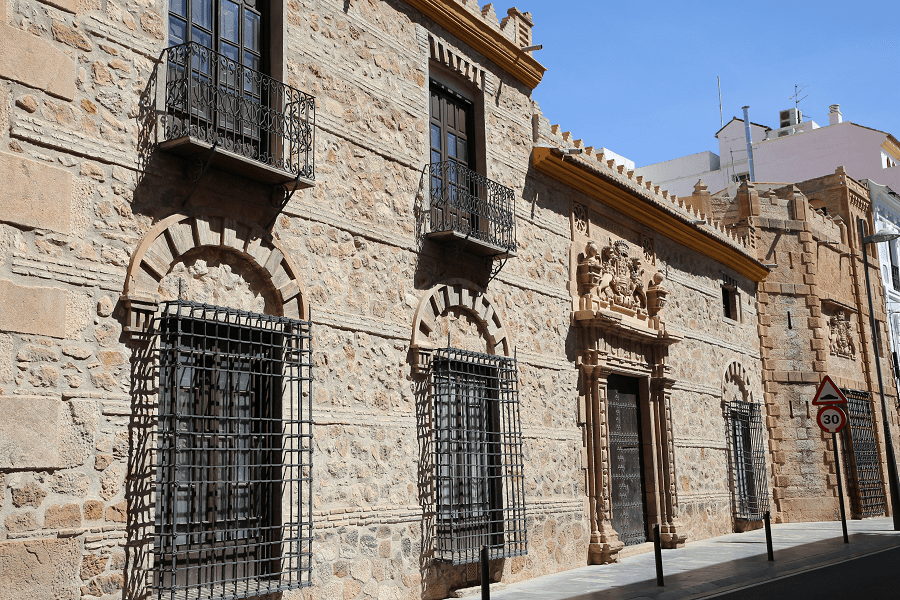Lorca is a municipality and city in the Region of Murcia in southeastern Spain, 58 kilometres southwest of the city of Murcia.
In the Middle Ages Lorca was the frontier town between Christian and Muslim Spain. Even earlier to that during the Roman period it was ancient Ilura or Heliocroca of the Romans.
Lorca is known for its castle, its Baroque architecture and its Holy Week processions, declared a festival of international tourist interest.
Thanks to its dense heraldic heritage, it is also called “the city of 100 shields”, a name given to it by the former mayor José Antonio Gallego, while from its original name (Eliocroca) it takes the title of city of the sun. Its old town and the castle grounds, were declared a historical-artistic site on March 5, 1964, being the first in the Region of Murcia with this distinction.
Tourism and main attractions
The old town of the city of Lorca, together with the castle grounds, was declared a historical-artistic complex in 1964. The most significant monuments in Lorca are:
Castle of Lorca (9th-15th centuries), the main symbol of the city. Of Muslim origin, the main walls and towers (the Alfonsina and the Espolón) are nevertheless of medieval-Christian construction, in the Gothic style. Inside the old Jewish quarter of Lorca and its synagogue are preserved.
The Plaza de España (Lorca) (16th-18th centuries) is the nerve center of the Historic Center of Lorca. There are two emblematic buildings: the Town Hall and the Collegiate Church of San Patricio.
The Collegiate Church of San Patricio (16th-18th centuries) is the most important ecclesiastical building in Lorca. It was declared a Historic Artistic Monument in 1941.
Town Hall of Lorca (17th-18th centuries), a 17th-century building originally built as a royal prison by Alonso Ruiz de la Jara.
The Plaza del Caño, formerly known as the greengrocery square, is where the buildings corresponding to the Pósito de los Panaderos (16th century), headquarters of the Casa del Artesano, the Carnicerías (old Municipal Archive) and the Casa del Corregidor were located (18th century), seat of the Courts of Lorca. Miliaria column, Roman milestone (1st century BC). Located on Calle de la Corredera, one of the main pedestrian streets in the Old Town.
The Medieval Wall surrounded the original urban nucleus of Lorca. The Porche de San Antonio or Puerta de San Ginés (door from the end of the 13th century and the beginning of the 14th), the wall of Rambla street, the remains of a tower inside the Conservatory of Music on the street are preserved. Cava, and the section of Calle Ramírez with the Rojano tower.
Convent of Las Mercedarias (16th century).
Guevara Palace or House of Columns (17th-18th centuries).
Casa-Palacio de los Salazar-Rosso (16th-17th centuries), headquarters of the Municipal Archaeological Museum of Lorca.
Santo Domingo Monumental Complex, (16th-18th centuries).
The Church of San Francisco, originally from the 16th century, underwent severe reforms that have almost completely modified its initial architecture. It has a classicist façade and an interior with interesting baroque altarpieces.
Former Convent of La Merced, currently the Lorca Taller del Tiempo Visitor Center. Of medieval origin with a 16th century Renaissance façade and an 18th century cloister. Inside you can visit an interactive exhibition on the history of the city.
Old Colegio de la Purísima (18th century), which houses the Narciso Yepes Music Conservatory.
Iglesia del Carmen, Carmelite church from the mid-18th century.
Church of San Cristóbal (17th-18th centuries).
Church of San Diego (17th century).
Casa Irurita (16th century). Oldest noble mansion in the city.
Church of San Mateo (18th-19th centuries).
Church of Santiago (18th century).
Palace of the Counts of San Julián (17th-19th centuries).
Monte Calvario, a hill on which a series of hermitages were built at the beginning of the 17th century as an alternative to pilgrims who could not travel to the Holy Land. From here you can see a beautiful panoramic view of Lorca and the Castle.
Casino Artístico, a unique building with an Andalusian appearance, designed by Manuel Martínez from Lorca.
Teatro Guerra is the oldest theater in the Region of Murcia, inaugurated in 1861.
Sindicato de Riegos (18th century), where water is administered for the use of the Lorca garden.
Cámara Agrícola (early 20th century), modernist style building, unusual in this area of the Murcia Region, designed by Mario Spottorno, from Cartagena, also an architect of important modernist buildings in Cartagena.
Puente de Piedra, or Puente del Barrio (19th century), a work of great monumentality and solidity, as it suffered two strong floods.
Virgen de las Huertas Convent (15th century), a Franciscan convent destroyed during a flood in 1653 and rebuilt in the mid-18th century. Located on the outskirts of the city. In its subsoil the remains of a Muslim palace have been discovered.
Sutullena bullring (1892).
Puente de la Torta (1910), pioneer construction in the use of concrete.
Museums
The Municipal Archaeological Museum of Lorca is located in the old Casa de los Salazar-Rosso (16th century). It exposes prehistoric finds and explains the history of Lorca and its region through the different civilizations that have occupied it.
Los Cipreses Archaeological Park (Bronze Age).
Guevara Palace Museum House, also known as the House of Columns (17th-18th centuries). Declared an Asset of Cultural Interest, it is one of the great symbols of the city and one of the best examples of the civil baroque of the Spanish Levant. It also houses the Lorca tourist office.
Ethnological and archaeological interpretation center of the district of Coy.
Embroidery Museums, which display samples of the work that has been carried out over time in the brotherhoods of the famous Holy Week in Lorca. Not only clothing, flags and fabrics of various kinds are displayed, but also cars, armor and historical photographs. These museums are:
- Mubbla. Paso Blanco Embroidery Museum.
- Paso Azul Embroidery Museum.
- Nicolás Salzillo Museum of Sacred Art. Purple Step.
- Paso Encarnado Embroidery Museum.
Huerto Ruano Palace (19th century), declared a Site of Cultural Interest, used as a museum for art and painting exhibitions. It reflects the European artistic currents with which his owner, Raimundo Ruano, came into contact during his long stay in Edinburgh.
Aula Selgas Museum, which houses the exhibition Luces de Sefarad on the archaeological remains of the Jewish Quarter of Lorca.
Transport and how to get to?
Lorca has four stations in its municipal area, two of them in its main urban nucleus (Lorca-Sutullena and Lorca-San Diego) and the other two (Almendricos and La Hoya) in their respective districts.
It has a line of Cercanías de Murcia. Line C-2 connects Lorca with Totana, Alhama de Murcia, Librilla, Alcantarilla and Murcia; and with Puerto Lumbreras, Pulpí and Águilas, passing through a part of the province of Almería in Pulpí. In summer periods it is widely used to access the Playa del Hornillo, in neighboring Águilas.
Sutullena station also has a long-distance service, with a Talgo to and from Barcelona via Murcia, Alicante, Valencia, Castellón de la Plana and Tarragona, with daily service. It also has a weekly Intercity service with Madrid.
Until 1985 there was a direct connection with the city of Granada and the rest of eastern Andalusia. It was the so-called Almanzora railway. In recent years, due to the new boom in rail transport, there are Administration plans to put the line back into operation with passenger and freight transport.
With the new Mediterranean Corridor line, Lorca will have a High Speed stop. It will be one of the only two stops, together with Vera, on the Murcia – Almeria section.
The Murcia Region International Airport, also known as Corvera Airport, is located between the Murcian districts of Corvera and Valladolises, 69.5 kilometers from Lorca. Since January 2019, the date of its inauguration, is the only one in the Region of Murcia that operates civil flights after the Murcia-San Javier Airport, which was operational for fifty years, was left for exclusively military use.
The aerodrome has several international routes with various European countries, both on regular flights (whether seasonal or annual) and on charter flights, with a national route. Its main competitor is the Alicante – Elche Airport, part of the Aena airport network and located 133.7 kilometers from Lorca.
By car: from Murcia 48 min (70.1 km) via A-7
Restaurants
There are no Michelin list restaurants in Lorca.
Main information
Area: 1675 sq. km (municipality)
Coordinates: 37.6798°N 1.6944°W
Population: 95 515
Languages: Spanish
Currency: Euro
Visa: Schengen
Time: Central European UTC +1



